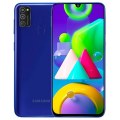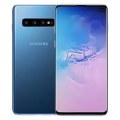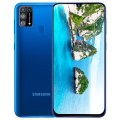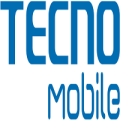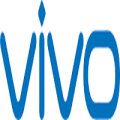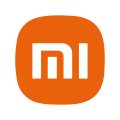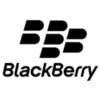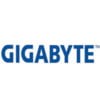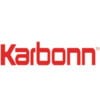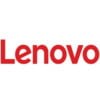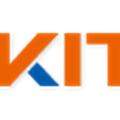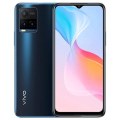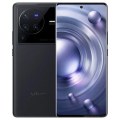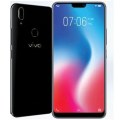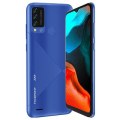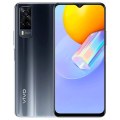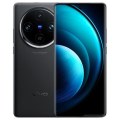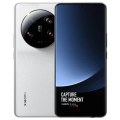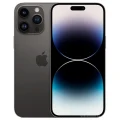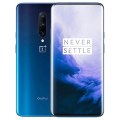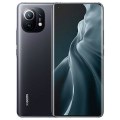- Awesome page
- Latest Mobile
- Smartphones
- Samsung Galaxy S8
Samsung Galaxy S8
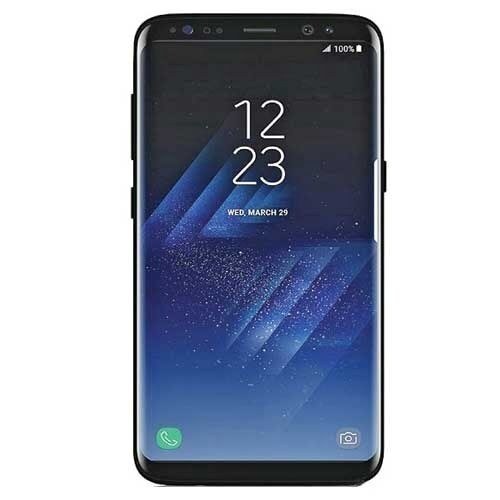


Specifications
General
| Model | Samsung Galaxy S8 |
| Announced | 22 March, 2024 |
| Released | 22 November, 2024 |
| Status | Available |
Design
| Dimensions | 148.9 x 68.1 x 8 mm (5.86 x 2.68 x 0.31 in) |
| Weight | 155 g (5.47 oz) |
| Colors |
Midnight Black, Orchid Gray, Arctic Silver, Coral Blue, Maple Gold, Rose Pink, Burgundy Red |
Network
| Technology | GSM / HSPA / LTE |
| 2G Network |
GSM 850 / 900 / 1800 / 1900 - SIM 1 & SIM 2 (dual-SIM model only) |
| 3G Network |
HSDPA 850 / 900 / 1700(AWS) / 1900 / 2100 |
| 4G Network |
LTE band 1(2100), 2(1900), 3(1800), 4(1700/2100), 5(850), 7(2600), 8(900), 12(700), 13(700), 17(700), 18(800), 19(800), 20(800), 25(1900), 26(850), 28(700), 32(1500), 66(1700/2100), 38(2600), 39(1900), 40(2300), 41(2500) |
| GPRS <strong>GPRS</strong> (General Packet Radio Service) is a packet oriented mobile data service on the 2G and 3G cellular communication system's global system for mobile communications (GSM), Generally, GPRS is used for the purpose of wireless data transfer, such as sharing pictures and videos or browsing the Internet via a mobile phone connection. | |
| EDGE <strong>EDGE</strong> (Enhanced Data GSM Environment) is a wireless network technology generally considered the next step in the 2G network offers data transfer rates up to four times faster than ordinary GSM networks, Generally, EDGE is used for the purpose of wireless data transfer, such as sharing pictures and videos or browsing the Internet via a mobile phone connection. | |
| Speed | HSPA 42.2/5.76 Mbps, LTE-A (5CA) Cat16 1024/150 Mbps |
Display
| Display Type <strong>Display Technology => </strong> A number of display technologies and types used in mobile phones => TFT (Thin Film Transistor), IPS (In-Place Switching), OLED (Organic Light Emitting Diode), AMOLED (Active-Matrix Organic Light-Emitting Diode), Super AMOLED (an even advanced version of AMOLED), Resistive Touchscreen (Resistive touchscreens contain two layer of conductive material with a very small gap between them which acts as a resistance), Capacitive Touchsceen (Capacitive touchscreen technology consists of a layer of glass coated with a transparent conductor) | Super AMOLED capacitive touchscreen, 16M colors |
| Size | 5.8 inches, 84.8 cm2 (~83.6% screen-to-body ratio) |
| Resolution | 1440 x 2960 pixels, 18.5:9 ratio (~570 ppi density) |
| Features |
Gorilla Glass 5 - HDR10 compliant- 3D Touch (home button only)- Always-on display |
Camera
Main camera
| Camera Setup | Single |
| Primary <strong>Camera</strong> is able to capture photographs and usually videos, The most important characteristics of a camera are the resolution (measured in megapixels), lens focus type (fixed or automatic), higher megapixel cameras are known to capture higher quality photos, but not always a good measurement of the photos quality. |
12 MP, f/1.7, 26mm (wide), 1/2.55&amp;quot;, 1.4µm, OIS, dual pixel PDAF |
| Features |
LED flash, auto-HDR, panorama |
| Video | 2160p@30fps, 1080p@60fps, 720p@240fps, HDR, dual-video rec. |
Selfie camera
| Camera Setup | Single |
| Primary <strong>Camera</strong> is able to capture photographs and usually videos, The most important characteristics of a camera are the resolution (measured in megapixels), lens focus type (fixed or automatic), higher megapixel cameras are known to capture higher quality photos, but not always a good measurement of the photos quality. |
8 MP, f/7.7, 25mm (wide), 1/3.6&amp;quot;, 1.22µm, AF |
| Features |
Dual video call, Auto-HDR |
Hardware
| Chipset <strong>Chipset</strong> is a group of integrated circuits designed to perform one or a more dedicated functions, often with real time computing constraints, Popular smartphones are equipped with more advanced embedded chipsets that can do many different tasks depending on their programming. | Exynos 8895 Octa (10 nm) - EMEA Qualcomm MSM8998 Snapdragon 835 (10 nm) - USA & China |
| CPU <strong>CPU</strong> (Central Processing Unit) mostly known as processors, CPU processes instructions in order to carry out certain functions that make your device operate properly. Processors are often described as the brain of computers, smartphones and tablets, Smartphones and tablets rely on processors to carry out their every task, Processors are an incredibly important factor in selecting any type of computing device, including your smartphone. | Octa-core (4x2.3 GHz Mongoose M2 & 4x1.7 GHz Cortex-A53) - EMEA Octa-core (4x2.35 GHz Kryo & 4x1.9 GHz Kryo) - USA & China |
| GPU <strong>GPU</strong> (Graphics Processing Unit) is a single-chip processor designed to rapidly manipulate and alter memory to accelerate the creation of images in a frame buffer intended for output to a display, This includes things such as lighting effects, object transformations, and 3D motion. | Mali-G71 MP20 - EMEA Adreno 540 - USA & China |
| RAM (Memory) <strong>RAM</strong> (Random Access Memory) is a type of computer memory that can be accessed randomly, any byte of memory can be accessed without touching the preceding bytes that allows information to be stored and accessed quickly from random locations. RAM is the most common type of memory found in computer systems, smartphones, tablets and other electronic devices. | 4 GB RAM |
| Internal Storage <strong>Internal Storage</strong> is a data storage space (flash memory) mostly used in smartphones, tablets and other electronic devices where operating system, apps, music, photos, videos, files and other user data Is stored. | 64 GB |
| Sensors <strong>Sensors</strong> are electronic components that detects and responds to some type of input from the physical environment. The specific input could be light, heat, motion, moisture, pressure and location, The output is generally a signal that is converted to use in computing systems, a location sensor, such as a GPS receiver is able to detect current location of your electronic device. |
Iris scanner, fingerprint (rear-mounted), accelerometer, gyro, proximity, compass, barometer, heart rate, SpO2 |
Connectivity
| Bluetooth <strong>Bluetooth</strong> is a wireless communications technology for exchanging data between mobile phones, headsets, computers and other network devices over short distances without wires, Bluetooth technology was primarily designed to support simple wireless networking of personal consumer devices. | 5.0, A2DP, LE, aptX |
| Infrared <strong>Infrared</strong> connectivity is an old wireless technology used to connect two electronic devices. It uses a beam of infrared light to transmit information and so requires direct line of sight and operates only at close range. | |
| USB | 3.1, Type-C 1.0 reversible connector |
| GPS <strong>GPS</strong> The Global Positioning System is a satellite-based radio navigation system, GPS permits users to determine their position, velocity and the time 24 hours a day, in all weather, anywhere in the world, In order to locate your position, your device or GPS receiver must have a clear view of the sky. | Yes, with A-GPS, GLONASS, BDS, GALILEO |
| NFC <strong>NFC</strong> (Near field communication) is a set of standards for smartphones and similar devices to establish peer-to-peer radio communications with each other by touching them together or bringing them into proximity, usually no more than a few inches. |
Battery
| Battery Type <strong>Battery Type => </strong> Cell phones run on various kinds of batteries depending on the manufacturer, phone size or shape and features. There are basically four types of cell phone batteries => Lithium Polymer, Lithium Ion, Nickel Metal Hydride and Nickel Cadmium. | Non-Removable Li-Po |
| Capacity <strong>Battery Capacity</strong> is a measure (typically in Amp-hr) of the charge stored by the battery, and is determined by the mass of active material contained in the battery. The battery capacity represents the maximum amount of energy that can be extracted from the battery under certain conditions. | 3000 mAh battery (11.55 Wh) |
| Charging Charging | Fast battery charging (Quick Charge 2.0) |
Samsung Galaxy S8 Review: A Glimpse into the Future of Smartphones
Introduction
The Samsung Galaxy S8, released in 2017, shook the smartphone market with its groundbreaking features and sleek design. For tech enthusiasts, Samsung fans, and everyday smartphone users alike, the Galaxy S8 represented a major leap forward in mobile technology. This review will explore the key aspects of the Samsung Galaxy S8, from its design and build quality to its performance and value. Whether you’re considering an upgrade or just curious about this iconic device, you’ll find valuable insights and practical information here.
Design and Build Quality
Sleek Elegance Redefined
At first glance, the Galaxy S8 captures your attention with its stunning design. The phone boasts a nearly bezel-less, edge-to-edge display that curves seamlessly around the sides, creating an immersive visual experience. The materials used, primarily glass and metal, give it a premium feel that stands out in a crowded market. The ergonomics are also impressive, with the device fitting comfortably in hand despite its larger screen size.
Durability and Functionality
Durability is a crucial consideration for any smartphone user, and the Galaxy S8 does not disappoint. The Gorilla Glass 5 on both the front and back provides a strong defense against scratches and minor drops. Additionally, the phone is IP68 rated, meaning it is both dust and water-resistant. This makes it a reliable companion for outdoor adventures or accidental spills.
Ergonomics and Usability
The placement of the buttons and the fingerprint scanner on the back may take some getting used to, but overall, the design promotes one-handed use without compromising functionality. The phone’s slim profile and lightweight build make it easy to carry around, further enhancing its appeal.
Display and Camera
Visual Delight
The Galaxy S8 features a 5.8-inch Super AMOLED display with a resolution of 1440 x 2960 pixels. This translates to vibrant colors, deep blacks, and excellent contrast ratios. The screen is HDR10 compliant, making it perfect for streaming high-definition content. Whether you’re watching movies or browsing photos, the display offers an unparalleled viewing experience.
Photography Excellence
The camera setup on the Galaxy S8 is equally impressive. The 12-megapixel rear camera with an f/1.7 aperture captures stunning photos in various lighting conditions. Samsung’s dual-pixel technology ensures fast and accurate autofocus, making it easier to capture those fleeting moments. The front-facing 8-megapixel camera with autofocus is ideal for selfies and video calls, providing clear and sharp images.
Advanced Features
The camera software includes a range of features such as Pro Mode, Panorama, and Slow Motion, allowing users to experiment with different photography styles. The inclusion of optical image stabilization (OIS) helps in reducing blur, especially in low-light conditions, making the Galaxy S8 a versatile tool for photography enthusiasts.
Performance and Battery Life
Powerhouse Performance
Under the hood, the Galaxy S8 is powered by the Exynos 8895 or Snapdragon 835 processor, depending on the region. Coupled with 4GB of RAM, the device handles multitasking with ease. Whether you’re gaming, streaming, or running multiple apps simultaneously, the Galaxy S8 delivers smooth and efficient performance.
Battery That Keeps Up
The 3000mAh battery offers decent endurance, lasting through a full day of moderate use. Fast charging and wireless charging capabilities add to the convenience, ensuring that you’re never left without power for long. The phone also includes various battery optimization features to extend usage time.
Heat Management
One concern with high-performance devices is heat generation, but the Galaxy S8 manages to keep temperatures in check. The built-in cooling system prevents overheating, even during extended gaming sessions or heavy multitasking, ensuring a consistent performance.
Software and User Experience
Intuitive Interface
The Galaxy S8 runs on Samsung’s custom skin, initially launched with Android 7.0 Nougat. The user interface is clean and intuitive, with various customization options to tailor the experience to your preferences. Features like Edge Panels provide quick access to frequently used apps and contacts, enhancing usability.
Seamless Integration
Samsung has included several software enhancements that integrate well with the hardware. Bixby, Samsung’s virtual assistant, offers voice, text, and camera-based interactions to help you get things done more efficiently. Although Bixby faced mixed reviews at launch, subsequent updates have improved its functionality.
Security Features
Security is a top priority for Samsung, and the Galaxy S8 offers multiple biometric authentication options, including iris scanning, facial recognition, and a fingerprint scanner. These features ensure that your data remains secure while providing convenient access to your device.
Additional Features and Innovations
Unique Selling Points
The Galaxy S8 includes several innovative features that set it apart from its competitors. The DeX Station, for example, transforms your phone into a desktop-like experience when connected to a monitor, keyboard, and mouse. This feature is particularly useful for professionals who need to work on the go.
Immersive Experience
Samsung’s Infinity Display, with its 18.5:9 aspect ratio, offers an immersive viewing experience that is perfect for multimedia consumption. The Always-On Display feature provides quick access to notifications and essential information without waking up the device, adding to the convenience.
Connectivity Options
The Galaxy S8 supports a wide range of connectivity options, including Bluetooth 5.0, NFC, and USB Type-C. These features ensure that you can connect to various devices and accessories seamlessly, further enhancing the overall user experience.
Price and Value
Investment Worth Making
The Samsung Galaxy S8 was initially priced at a premium, reflecting its high-end features and cutting-edge technology. However, with the release of newer models, the price has become more accessible, making it a compelling option for those looking for a premium smartphone experience without breaking the bank.
Feature-Rich Experience
In terms of value, the Galaxy S8 offers a feature-rich experience that justifies its cost. The combination of a stunning display, powerful performance, and versatile camera makes it a well-rounded device that caters to various user needs.
Long-Term Benefits
Investing in the Galaxy S8 means you’re getting a device that will remain relevant for years to come. Regular software updates and a robust build ensure that the phone stays up-to-date and functional, providing long-term value to its users.
Conclusion
The Samsung Galaxy S8 remains a standout device in the crowded smartphone market. Its innovative design, powerful performance, and rich feature set make it a top choice for tech enthusiasts, Samsung fans, and everyday users alike. Whether you’re looking for a reliable daily driver or a phone that offers advanced capabilities, the Galaxy S8 delivers on all fronts.
For those considering an upgrade, the Galaxy S8 offers a balanced blend of aesthetics and functionality that is hard to beat. We invite you to share your thoughts on this review and stay tuned for more content by joining our newsletter. Happy exploring!
